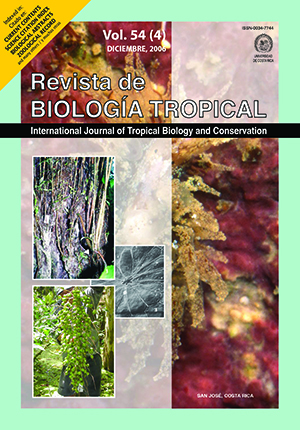Abstract
As result of its biological and ecological strategies, Pseudupeneus grandisquamis is a dominant species in the demersal community of the Gulf of Tehuantepec, Mexico. Our main objective was to understand these strategies with respect to distribution, abundance and reproduction. We analyzed 5 175 individuals representing partial collections from five oceanographic expeditions between 1989 and 1990. It is a typical demersal marine species, with a wide distribution on the continental shelf. The highest abundance of P. grandisquamis occurs in March and November, around the 40 m isobath, facing the Superior-Inferior lake systems and Mar Muerto Lagoon. Reproduction occurred during all of the months studied, particularly from August to October, corresponding to the rainy season, when the salinity and temperature is lower. The presence of juveniles, principally in November and March, suggests a long period of recruitment; they are distributed mainly in the Superior-Inferior Lagoons, which serves as a nursery area where they remain until they are adults. The total female to male sex ratio was nearly 1:1 throughout the year. The maximum total length was 213 mm and the size at first maturity was 138 mm TL. The high abundance and reproduction occur when the gulf has a high level of ecological production, in accordance with the dynamics of the system, where the influence of coastal lagoons is important. Protection strategies for the area above the continental shelf of the Gulf of Tehuantepec are recommended for the estuary processes and for the reproduction and rearing of a large number of species, including P. grandisquamis.
##plugins.facebook.comentarios##

This work is licensed under a Creative Commons Attribution 4.0 International License.
Copyright (c) 2006 Revista de Biología Tropical






